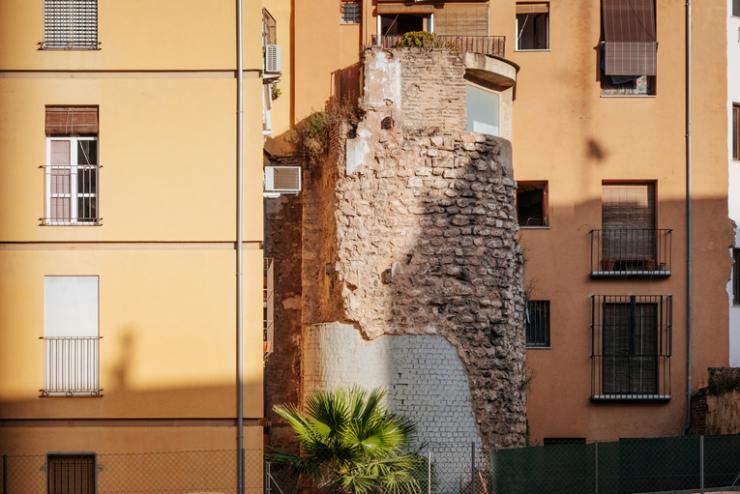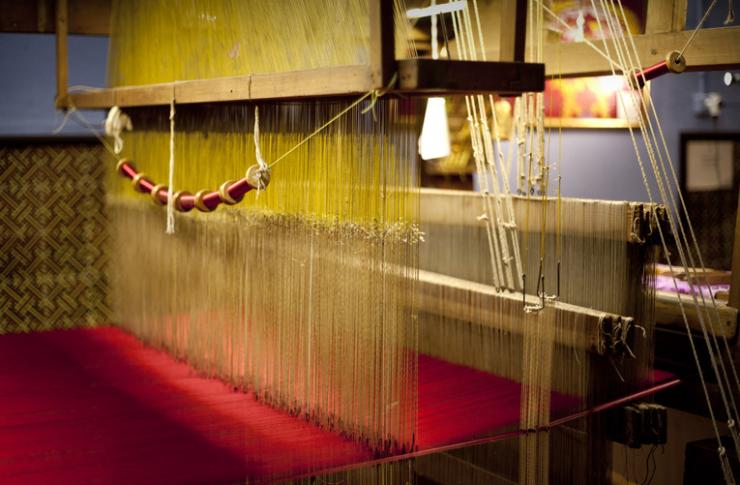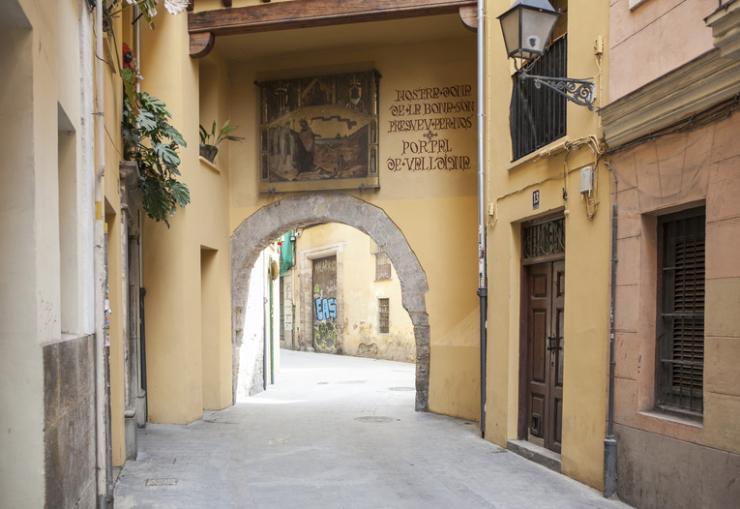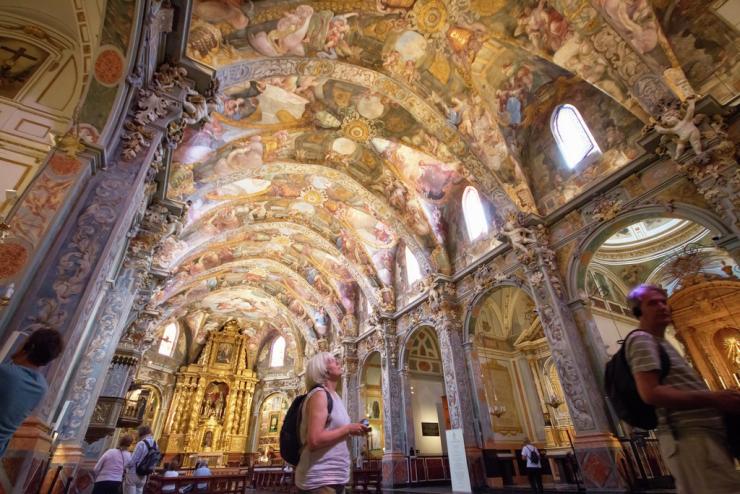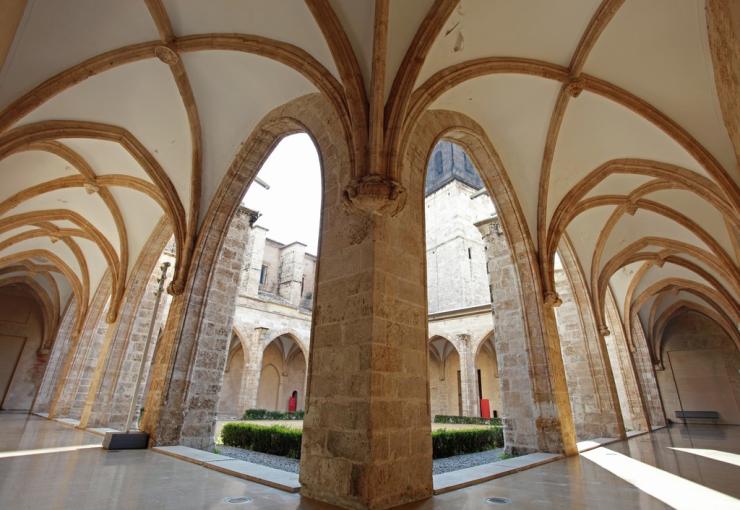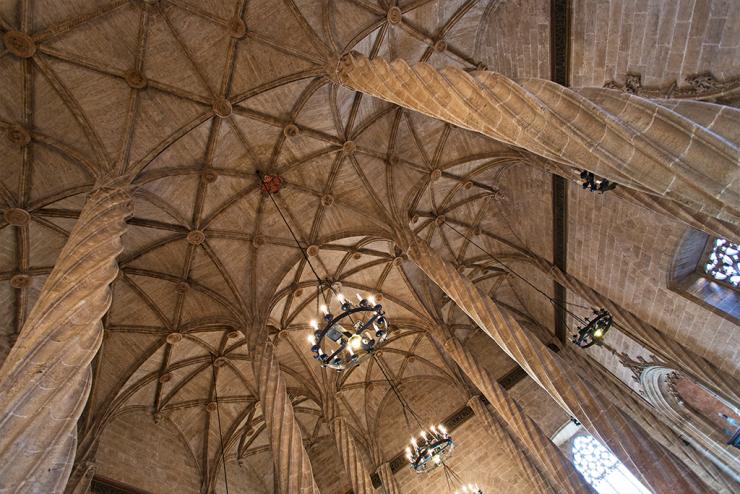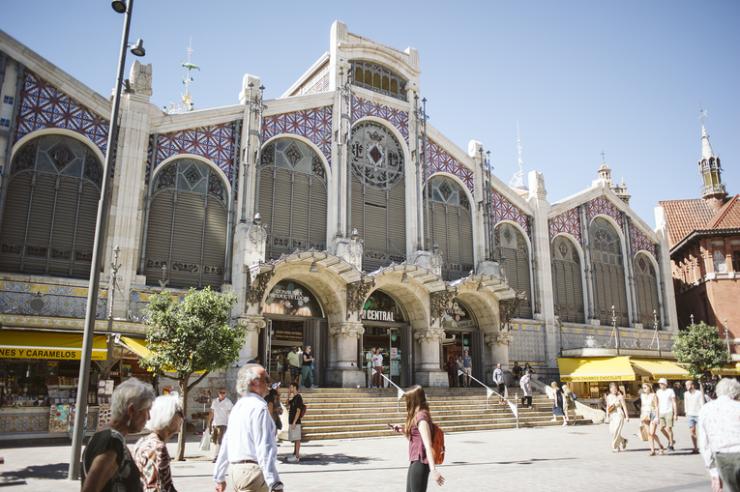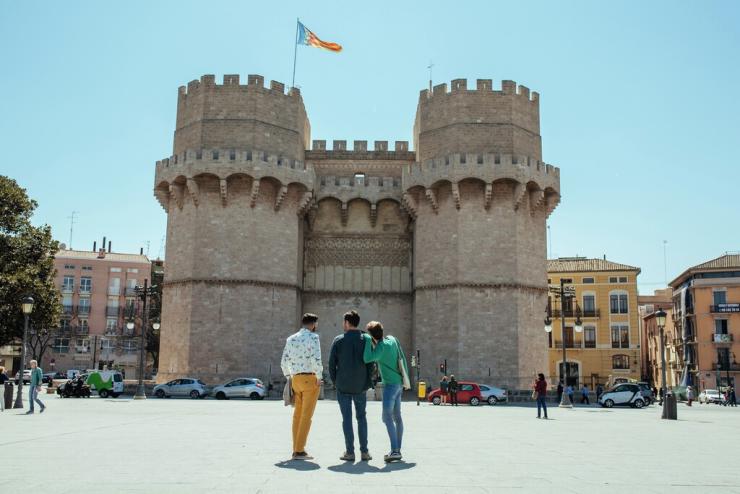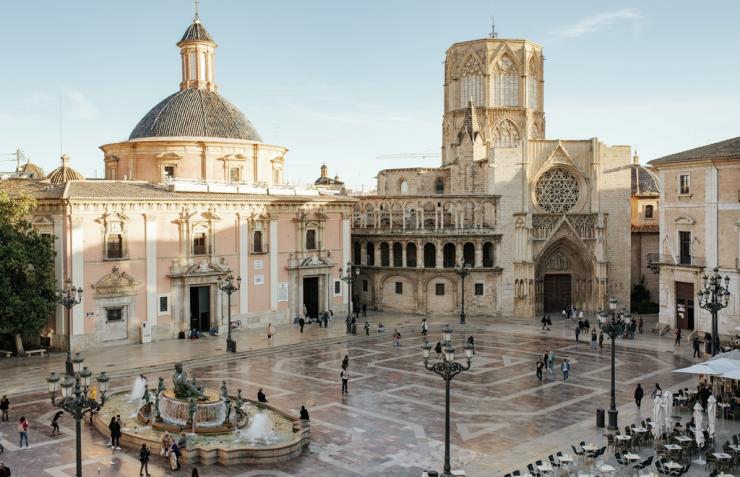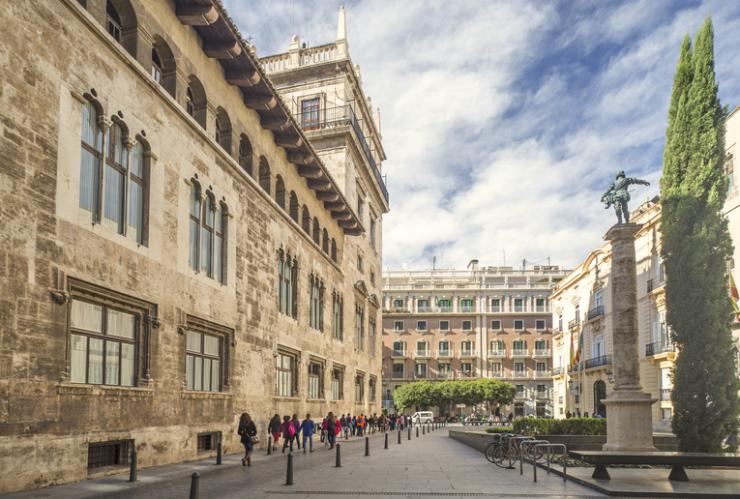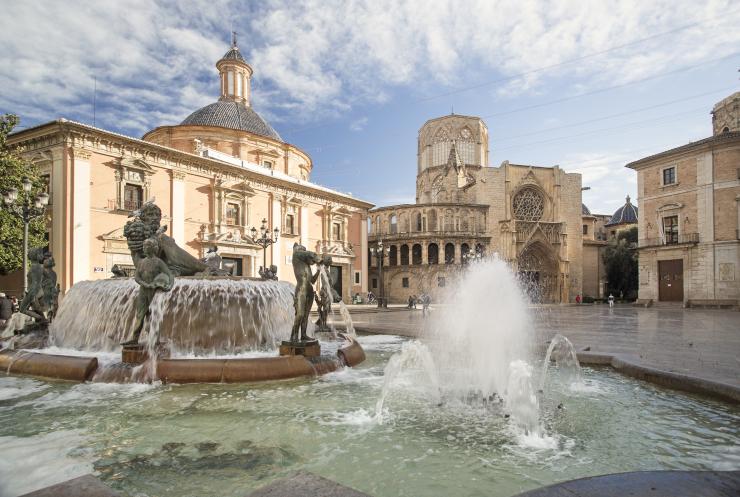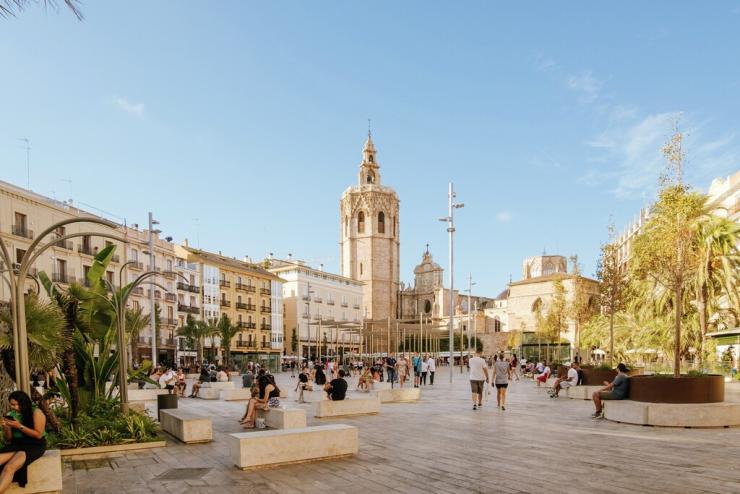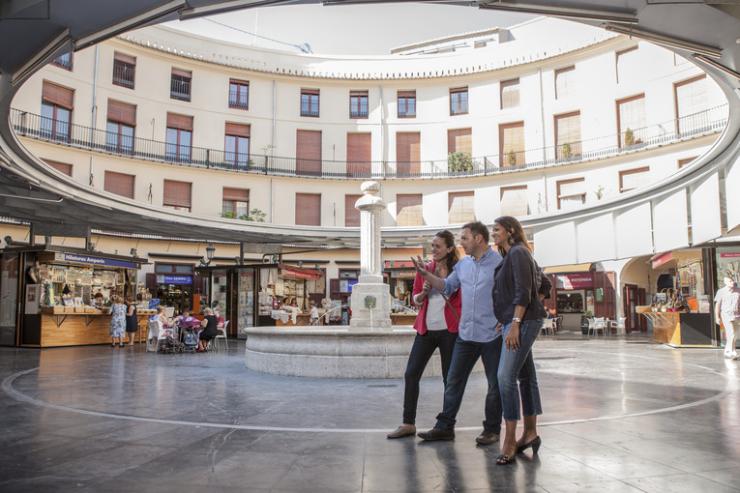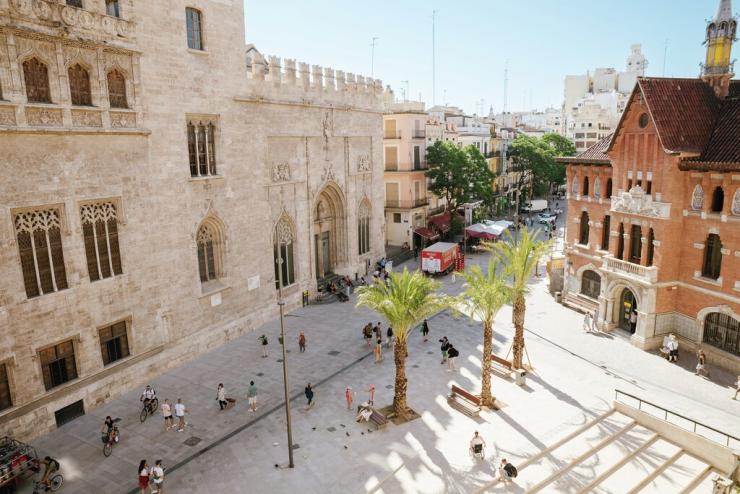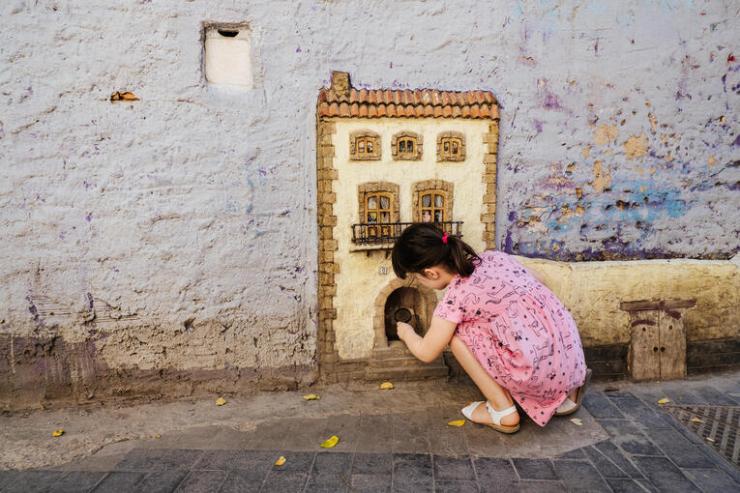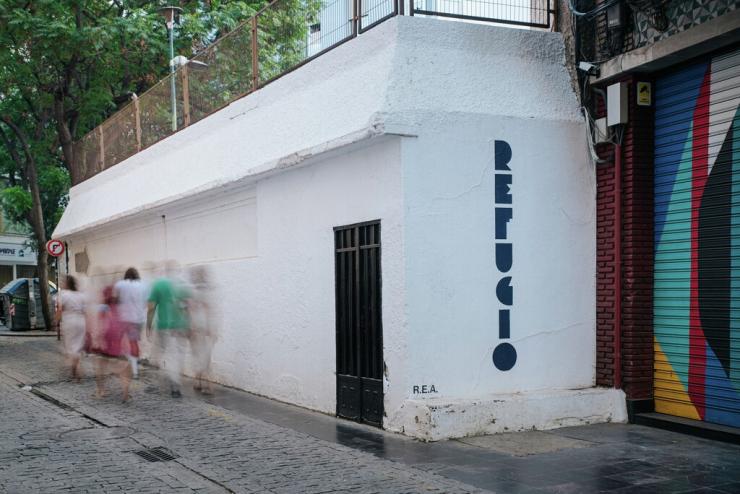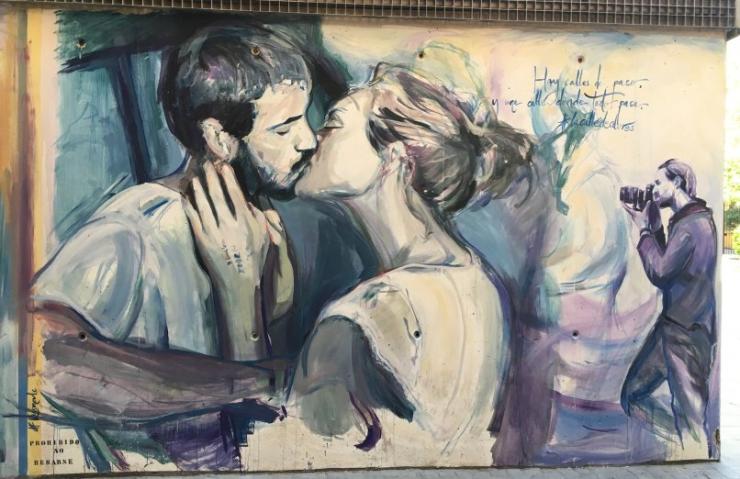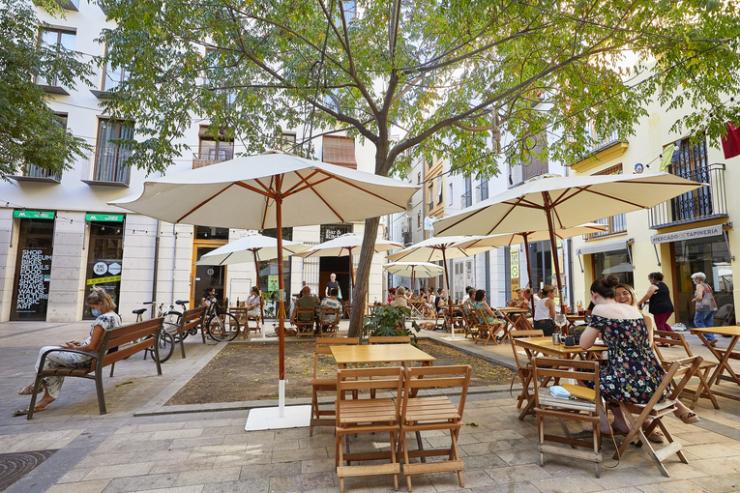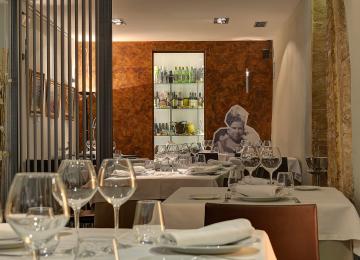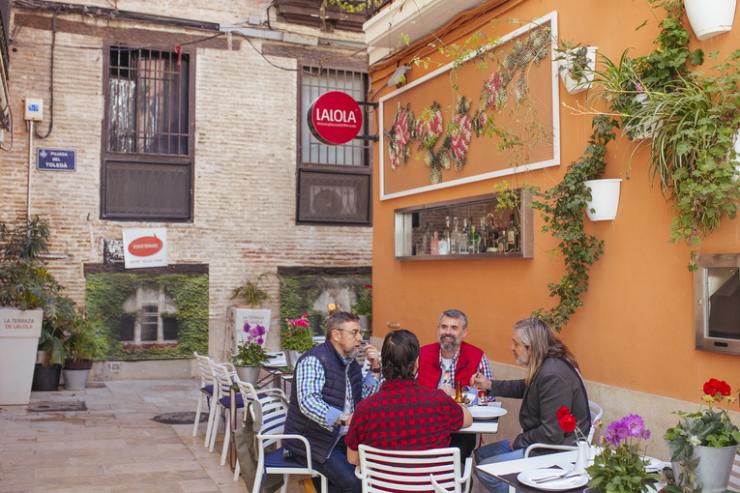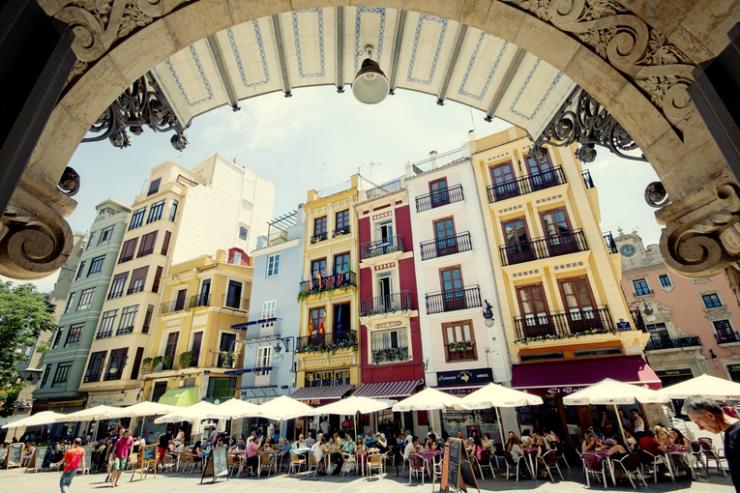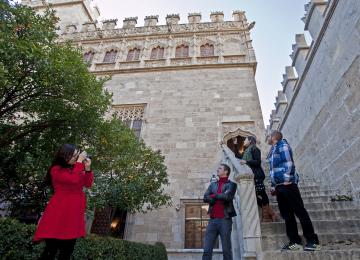(Calle Serranos, 22). Typical local cuisine featuring rice and other quality Mediterranean dishes.
El Carmen neighborhood: a cocktail of history and leisure
The district of El Carmen, located at the northwest end of the historic center, is the best known of Valencia's neighborhoods. It takes its name from the church and convent of Carmen Calzado, and is rightly renowned as a utopia for lovers of Mediterranean cuisine and leisure. Although the range of restaurants and venues is unparalleled, this neighborhood is much more than that. It's an area of Ciutat Vella with a thousand years of history and magnificent examples of medieval architecture, a rich artistic heritage, hundreds of historical anecdotes and the origin of a good number of local legends. Because the Barrio del Carmen is the perfect combination of history and leisure.
Its history. Home of the strangest guilds
In the 11th century, with the Arab wall recently completed, an area that remained outside this structure would gradually gain in agricultural activity. Houses would be built alongside the few existing farmsteads. Being outside the wall explains why today, it is the place where the remains of the Islamic fortification are most visible, since the area developed behind it, preserving it and integrating it into its buildings. Such is the case of the section of wall and tower found in the vicinity of the squares of the Angel and Los Navarros, as well as Calle de la Cruz. Or inside the Montaner bakery.
Once James I conquered the city, the king distributed some of the dwellings in that part of the city among his troops. The area would be entirely under the protection of the expanded Christian wall built in the 14th century. After that, it became a refuge for a large part of the medieval guilds, some of which involved curious occupations. Els blanquers (tanners) gave the name to the area of Blanqueries, els caputxers were tasked with making the hoods used at times of mourning, but only els corredors d’orella were dedicated to proclaiming the announcement of the Virgin. Els velluters (velvet weavers) were crucially important, given the countless looms that populated Valencia and gave rise to the Colegio Mayor de la Seda, an institution that you can learn about by visiting the Museo de la Seda (Silk Museum). Then there were the els traginers (mule drivers), who transported goods and dead people in their carts (the plague was wreaking havoc), while els cegos oracioners (also called the paternosters) were blind people who sang songs to the rhythm of their guitars and vihuelas. What a horde! They no doubt helped give the neighborhood a roguish feel.
Explore its architectural and cultural heritage
The neighborhood preserves some of the city’s best museums and a few architectural jewels. One such jewel is known as Portal de la Valldigna, an ancient entrance to the Moorish quarter, where all the Muslims lived after James I took back the city.
The Church of San Nicolás de Bari and San Pedro Mártir has become a must-see in Valencia ever since its impressive mural paintings in the vault, regarded as Valencia's Sistine Chapel, were restored.
The former Convento del Carmen, from which the neighborhood gets its name, has been transformed into the Centre del Carme Cultura Contemporània, a modern museum. Also at the cutting edge is the prestigious Institut Valencià d'Art Modern (IVAM). La Beneficencia, with its magnificent collections of ethnographic and prehistoric items, rounds out the trio of large exhibit centers. How ironic that an ancient area like this would become home to the best modern art that Valencia has to offer.
A soothing visit has to include a couple of buildings in the very nearby Mercat district. The building of the Lonja de la Seda (Silk Exchange), a unique example of Gothic civic style and named a World Heritage Site by UNESCO, captivates visitors with the spectacular helical columns of its Contract Hall and the gargoyles and figures on its façade.
Another point of interest is the Central Market, a great temple for local products that features modernist decorations and is considered the great showcase for fresh food in Europe.
El Carmen is also home to the only two access gates to the medieval city that are still standing: Serranos and Quart. They used to close when the bells announced night fall. And anyone who lost track of time had no choice but to sleep "under the Valencia moon".
Did you know that the Holy Grail is located in the Cathedral of Valencia? And that it also houses one of the most important paintings of the first Spanish Renaissance? And that its Cathedral Museum is home to paintings by Maella and Goya? A climb up the Miguelete and learning the history of the Virgin of the Good Birth are other curiosities that are worth your time.
A series of plazas to enjoy
In addition, the El Carmen neighborhood, like the complex of Ciutat Vella, offers a series of plazas that are well worth visiting and enjoying. Manises is home to the seat of Valencia's regional government, the Palau de la Generalitat, a medieval building of late Gothic style, although heavily modified over the centuries.
Adjacent to it is the Plaza de la Virgen, which is home to the Cathedral, the Basilica of the Virgen de los Desamparados and one of the façades and the charming garden of the Palau de la Generalitat. Crossing it will take you to the Archeological Center of l'Almoina, ground zero for the city and its origins.
A stone's throw from here is the Plaza de la Reina, site of the Baroque, or iron, façade of the Cathedral and the famous bell tower or Micalet, and from which you can see the bell tower of the Church of Santa Catalina.
The back of this church provides access to one of the most unique spaces in Valencia: the Plaza Redonda. It is a setting that houses a wide range of gift shops and restaurants.
Be sure to drop by the Plaza del Mercado, and the Plaza del Doctor Collado, behind the Silk Exchange, which are always very lively. But to really experience Valencia's nightlife to the fullest, there's no place like the Plaza del Tossal. Enjoy these squares on a lively walk or on their sunny terraces.
Curiosities and other surprises
El Carmen is an inexhaustible source of curious places to explore. Like L’Iber, the most renowned museum of historical miniatures in the world, with more than 95,000 lead soldiers and different pieces on display. The House of Rocas, seat of the floats that represent monsters and mythological beings that are taken out on procession during the Corpus Christi celebrations. Or the House of Cats, a miniature home for kids at number 9 calle Museo. It features all kinds of details, like curtains behind the windows, main entrance, the fountain opposite the door... Next to this curious little house, a sign written on a tile recalls the height reached by the overflowing waters of the Turia River in October 1957 during the great flood. The streets of El Carmen, one of the most affected neighborhoods, are full of similar reminders.
Also worth a visit are the air raid shelters of the Spanish Civil War, during which Valencia was the capital of the 2nd Republic for almost a year. They are located at number 25 calle Serrans and number 37 calle Alta.
And don't forget to enjoy the street art events you'll find along the way, like on calle de los colores (calle de Moret), a large open-air urban art gallery. While you're there, be sure to look for the atzucacs (from the Arabic az-zuqâq, cul-de-sacs), typical of the patchwork of narrow streets that you are walking through. Here are some clues: the back of the restaurant L'Atzucac (Baix, 42) takes you to one. Calle Cañete is another. You can find the rest.
Shops and food for all tastes
A thousand years of history makes for a long visit. Maybe it's time to buy some presents before you think about eating. There are some curious shops here, starting at the Mercado de Tapinería (Tapestry Market), which combines local crafts and fashion with some food stalls. But if you're really hungry, then it’s a matter of visiting the Mossen Sorell Market, with local food and some places where you can enjoy a good vermouth.
The first step to whet your appetite and then satisfy your hunger is in the fine restaurants found in this area. Variety and quality. Here are a few examples:
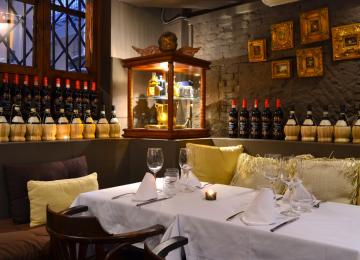
San Tommaso
(Corretgería, 39). Authentic Italian cuisine in Valencia: pizzas, fresh homemade pasta and other delicious foods from the Alpine country.
Evenings and nights in El Carmen
There is no better way to end the visit to the Barrio del Carmen than enjoying its exuberant leisure activities. El Carmen has become the nerve center of Valencia's nightlife. After the flood of 1957, the neighborhood went into decline, but a couple of decades later it began to spring back to life with the opening of pubs and entertainment venues. Undoubtedly, the young people of the time felt drawn to it by its age-old character. The demands of its residents and the repurposing of the old, semi-abandoned palaces as headquarters for official institutions helped to consolidate its rebirth.
Today, it is a hub in the city in terms of the range of cafes, bars and other places to enjoy the good life. Many of them are located on Calle Roteros, Calle Baja or in the vicinity of Plaza del Tossal. They come in all styles. Like the traditional Café Negrito (Plaza del Negrito, 1), where you can enjoy mojitos and other cocktails. Ghecko (Plaza del Negrito, 2) opens later, since it's more about the nightlife.
You like jazz? Don't miss Jimmy Glass Jazz (Baja, 28), a prestigious venue with an international reputation. If you prefer psychedelia and funk, then Gong is your thing (Concordia, 3). For rock and good concerts, Peter Rock (Quart, 26) is the place to go. And if you like culture served with good live music, there's the classic Radio City (Santa Teresa, 19). Únic Daily Goodness (Plaza Sant Jaume, 1) offers eclecticism and a fusion of trends. As you can see, diversity and excitement reign supreme in the heart of Ciutat Vella. This is the Barrio del Carmen, a hotbed of attractions, a blend of history, heritage, survival and nightlife. Don’t pass it up!
HOW TO GET THERE
Plaza de la Virgen, València, España


